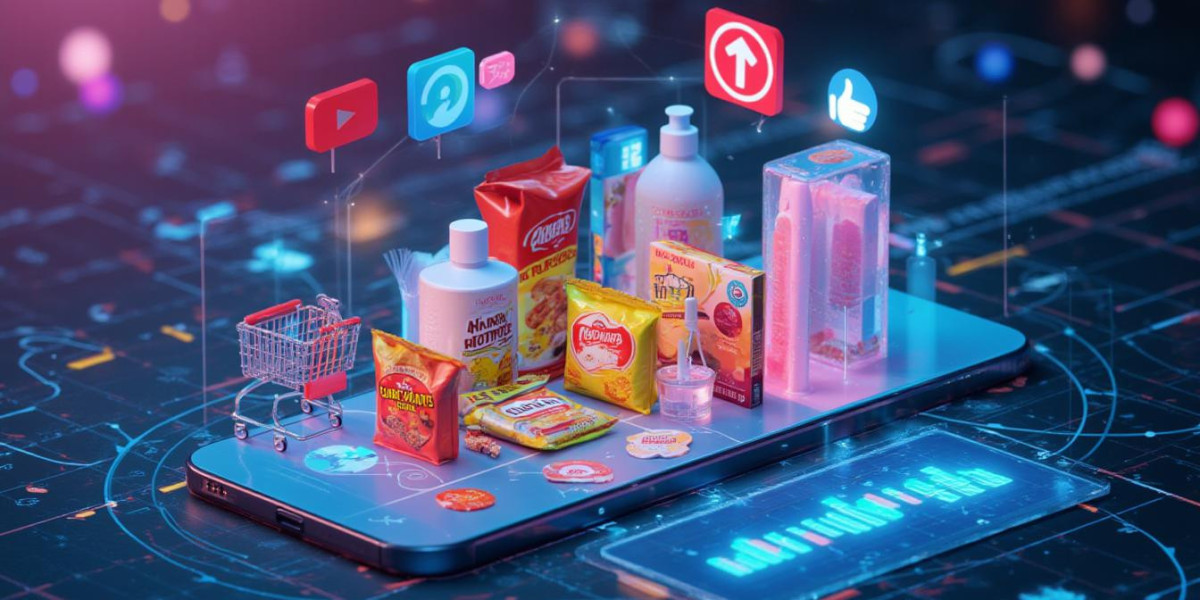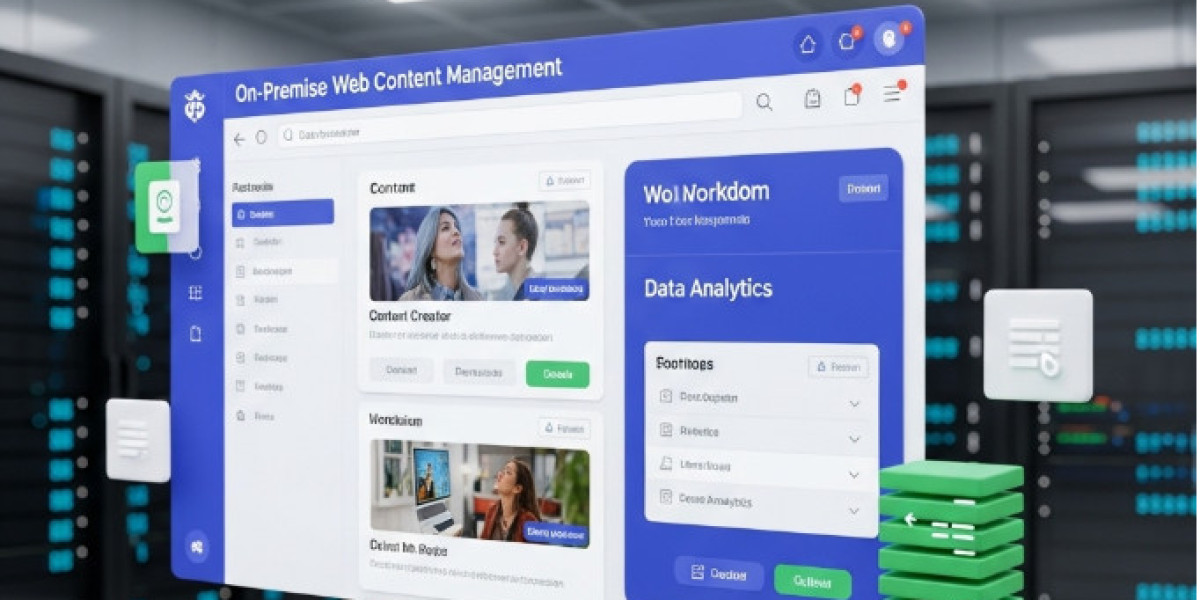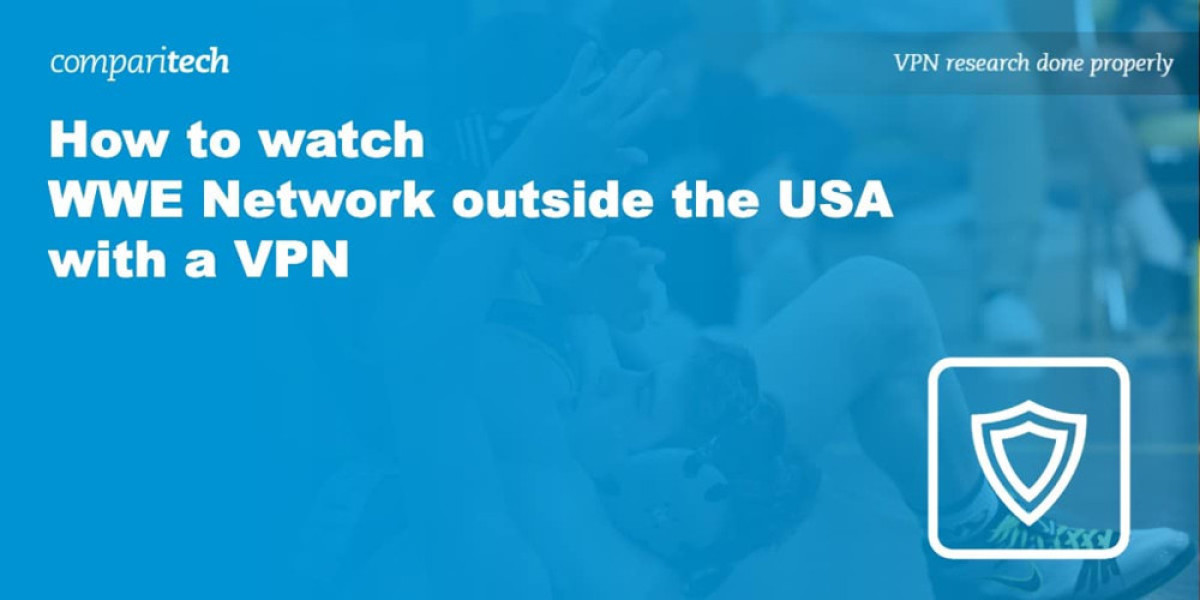Introduction
The global Fast-Moving Consumer Goods (FMCG) industry has always thrived on mass consumption, fast turnover, and wide distribution networks. Traditionally, FMCG brands relied on television, radio, billboards, and retail visibility to attract customers. However, in the digital era, the dynamics of marketing have completely shifted.
Today, social media platforms have become the central hub for consumer engagement, storytelling, and direct brand-consumer interactions. Social media is no longer a choice—it is a necessity for FMCG brands to remain relevant, visible, and competitive in a cluttered market.
In this blog, we will dive deep into the role of social media in driving FMCG brand growth, explore strategies, best practices, and future trends while also integrating insights into Digital Marketing for FMCG.
1. Understanding FMCG in the Digital Age
The FMCG sector covers products that consumers buy frequently, such as packaged food, beverages, toiletries, personal care, and household essentials.
Key characteristics of FMCG:
Low-cost products
High consumption frequency
Mass distribution
Low consumer loyalty in some categories
In today’s digital economy, consumers are highly informed, comparison-driven, and influenced by online opinions. This means FMCG brands need to go beyond just availability—they need to create a digital-first brand identity.
Social media bridges this gap by:
Offering instant visibility
Allowing direct interaction
Amplifying word-of-mouth marketing
Providing data-driven insights
2. Why Social Media is Crucial for FMCG Brands
Social media has transformed from a networking tool into a powerful marketing ecosystem. FMCG companies leverage it to create awareness, drive trial, build trust, and sustain loyalty.
Benefits for FMCG brands:
Mass Reach at Low Cost – Platforms like Instagram, Facebook, and TikTok allow brands to reach millions with minimal investment compared to traditional advertising.
Real-Time Consumer Feedback – Brands can understand preferences, complaints, and trends instantly.
Influencer Marketing – Social media influencers create authentic connections, which is particularly effective in FMCG categories.
User-Generated Content – Consumers posting reviews, recipes, or product usage increases brand credibility.
Targeted Advertising – With social media algorithms, FMCG brands can target specific demographics with precision.
3. Role of Storytelling in FMCG Social Media Marketing
Storytelling is at the heart of FMCG brand communication. Social media provides the stage for brands to share values, heritage, innovation, and emotional connections.
Example: Coca-Cola uses storytelling around happiness and togetherness.
Example: Dove focuses on real beauty and self-confidence.
Effective storytelling:
Builds emotional bonds
Creates shareable content
Differentiates the brand in a cluttered market
4. Social Media Platforms Driving FMCG Growth
1. Facebook & Instagram
Ideal for visual storytelling, contests, and brand promotions.
FMCG brands can launch new products through engaging reels and stories.
2. Twitter (X)
Great for real-time engagement, customer feedback, and trending topics.
3. YouTube
Tutorial videos, product reviews, and explainer content drive trust and awareness.
4. TikTok & Short-Form Video Platforms
Viral challenges and trends significantly impact FMCG product popularity.
5. LinkedIn
While less consumer-focused, it is important for B2B FMCG marketing, partnerships, and industry credibility.
5. Social Media Strategies for FMCG Success
a) Consistent Brand Voice
Maintain a clear and consistent tone across platforms.
b) Content Diversification
Mix product-focused content with lifestyle, entertainment, and user-generated posts.
c) Influencer Collaborations
Partner with micro and macro-influencers to build trust and relatability.
d) Interactive Campaigns
Run contests, polls, quizzes, and hashtag challenges to boost engagement.
e) Paid Advertising
Utilize precise targeting to reach niche segments and drive conversions.
f) Social Listening
Monitor conversations, analyze sentiment, and respond quickly to consumer needs.
6. Case Studies of FMCG Brands on Social Media
1. Nestlé
Nestlé leverages Instagram and YouTube to launch product campaigns with influencers, showcasing recipes and healthy lifestyle content.
2. PepsiCo
Through Twitter and TikTok challenges, Pepsi engages younger audiences with music, sports, and pop culture.
3. Hindustan Unilever (HUL)
Brands like Surf Excel and Dove run emotion-driven campaigns highlighting social issues, which increase shareability.
4. Patanjali
Built its brand using national pride messaging and grassroots-level promotion through digital media.
7. Measuring Social Media ROI for FMCG Brands
Key metrics FMCG marketers track:
Engagement Rate – Likes, comments, shares, saves
Reach & Impressions – How far campaigns travel
Sentiment Analysis – Consumer perception
Conversion Rate – Trials, purchases, and repeat buys
Return on Ad Spend (ROAS)
Advanced analytics allow FMCG brands to track customer journeys, identify best-performing content, and optimize campaigns.
8. Challenges FMCG Brands Face on Social Media
High Competition – Multiple brands competing for consumer attention.
Short Attention Span – Consumers scroll fast; content must be engaging.
Maintaining Consistency – Keeping brand identity intact across regions.
Crisis Management – Negative comments or controversies spread quickly online.
9. The Future of Social Media in FMCG Growth
AI-Powered Personalization – Hyper-targeted ads and chatbots.
Social Commerce – Buying directly from Instagram, Facebook, or TikTok.
AR/VR Marketing – Virtual try-ons and immersive brand experiences.
Sustainability Messaging – Consumers demand eco-friendly, ethical branding.
Data-Driven Creativity – Content optimized based on consumer behavior insights.
10. Integrating Social Media with Digital Marketing for FMCG
While social media is crucial, it should be part of a larger digital marketing ecosystem that includes:
SEO for FMCG brand visibility
Email marketing for personalized offers
E-commerce integration with retail partners
Programmatic advertising for precision targeting
Here, Digital Marketing for FMCG plays a pivotal role in uniting social media, paid ads, content marketing, and data analytics into a single growth-driven strategy.
Conclusion
The role of social media in driving FMCG brand growth cannot be overstated. It is the new marketplace where consumers discover, engage, and buy. From storytelling and influencer partnerships to social commerce and AI-powered personalization, FMCG brands that embrace social media marketing will continue to thrive in the future.
By integrating Digital Marketing for FMCG strategies, brands can build deeper consumer connections, enhance visibility, and accelerate growth in an increasingly competitive environment.
Frequently Asked Questions (FAQs)
Q1. Why is social media important for FMCG brands?
Social media is important for FMCG brands because it provides instant access to a massive consumer base at a fraction of traditional advertising costs. Unlike TV or print campaigns that require heavy investment, social media platforms allow brands to engage audiences in real time, test campaigns quickly, and build authentic conversations with consumers. Social media also enables FMCG companies to highlight product features, run seasonal promotions, and gather real-time feedback. With billions of active users worldwide, it has become the most effective channel for brand awareness, product launches, and loyalty-building.
Q2. Which social media platforms are most effective for FMCG marketing?
The best platform depends on the target audience and campaign objectives:
Instagram & TikTok – Perfect for visual and short-form content such as product demos, recipe videos, or viral challenges.
Facebook – Offers large reach, community groups, and advertising opportunities.
YouTube – Ideal for tutorials, reviews, and long-form brand storytelling.
Twitter (X) – Useful for trend-based marketing and direct consumer feedback.
LinkedIn – Works well for B2B FMCG communication and industry credibility.
By integrating multiple platforms, brands ensure omnichannel presence and consumer touchpoints at different stages of the buying journey.
Q3. How does influencer marketing help FMCG brands?
Influencer marketing is one of the most impactful strategies in the FMCG industry. Influencers, whether micro (with smaller but engaged audiences) or macro (with millions of followers), act as brand advocates. When they showcase FMCG products in authentic ways—such as cooking recipes, product reviews, or daily use—it increases consumer trust and purchase intent. Unlike traditional celebrity endorsements, influencers create relatable content, which makes the product appear more accessible. FMCG brands like Nestlé, PepsiCo, and Unilever invest heavily in influencer campaigns because they provide high engagement and measurable ROI.
Q4. What role does storytelling play in FMCG social media campaigns?
Storytelling is crucial because FMCG products often face high competition and low differentiation. A strong narrative allows brands to create emotional bonds with consumers rather than just promoting features. For example:
Dove tells stories about real beauty and self-confidence.
Surf Excel runs campaigns around kindness and values (“Daag Acche Hain”).
Coca-Cola consistently associates its brand with happiness and sharing moments.
By using storytelling, FMCG companies move beyond functional benefits to create lasting impressions that influence buying behavior.
Q5. How can FMCG brands measure success on social media?
Success is measured through both quantitative and qualitative metrics:
Engagement Rate – Likes, shares, comments, and saves.
Reach & Impressions – How many people have seen the campaign.
Conversion Rate – Percentage of social media viewers who purchase.
Brand Sentiment – Positive vs. negative consumer perception.
Return on Ad Spend (ROAS) – The direct revenue from social ads.
Advanced analytics tools like Google Analytics, Meta Ads Manager, and Sprout Social provide insights that help FMCG brands adjust campaigns in real time.
Q6. What are the main challenges FMCG brands face on social media?
Some of the most common challenges include:
High competition – Multiple brands fight for the same audience attention.
Short attention span – Consumers quickly scroll past content unless it is engaging.
Crisis management – Negative comments or PR issues can spread rapidly.
Maintaining brand consistency – Especially for global FMCG companies operating across regions.
Ad fatigue – Repetition of ads can reduce engagement.
Overcoming these challenges requires constant creativity, active social listening, and agile campaign management.
Q7. How does social commerce impact FMCG growth?
Social commerce refers to buying directly through social platforms like Instagram Shops, Facebook Marketplace, or TikTok Shopping. For FMCG brands, this reduces the gap between awareness and purchase, making the consumer journey shorter. For example, a user can see a cooking video on Instagram, tap on the product featured, and purchase it instantly. This convenience has significantly boosted impulse buying and brand conversions in the FMCG sector.
Q8. What future trends will shape FMCG social media marketing?
Some upcoming trends include:
AI-driven personalization – Tailored ads and recommendations for each user.
AR/VR experiences – Virtual product try-ons or packaging experiences.
Sustainability-driven storytelling – Eco-friendly packaging and ethical sourcing as core messages.
Hyperlocal targeting – Customized campaigns for city- or region-specific audiences.
Social commerce expansion – Seamless integration of e-commerce and social platforms.
Brands that adapt quickly to these trends will stay ahead in the competitive FMCG landscape.
Q9. How does Digital Marketing for FMCG integrate with social media strategies?
Social media is just one component of a broader Digital Marketing for FMCG strategy. Successful brands combine social campaigns with:
SEO for brand visibility on search engines.
Email marketing for personalized offers.
E-commerce partnerships with Amazon, Flipkart, or D2C websites.
Programmatic ads for precision targeting.
This integrated approach ensures consistent consumer touchpoints across multiple digital channels and maximizes ROI.
Q10. Can small FMCG brands also benefit from social media?
Yes, absolutely. Social media has leveled the playing field for smaller FMCG brands that lack huge advertising budgets. By using creative content, collaborating with micro-influencers, and running localized ad campaigns, even small businesses can reach thousands of potential customers. Social media also allows direct-to-consumer (D2C) FMCG startups to bypass traditional retail channels and sell directly through Instagram or WhatsApp.
Q11. How does consumer feedback on social media help FMCG companies?
Social media provides instant consumer feedback, whether positive or negative. Brands can identify what customers like, dislike, or expect in real time. For instance, if a new product launch receives negative comments about taste or packaging, FMCG companies can quickly improve and relaunch. Positive reviews, on the other hand, can be repurposed as user-generated content to strengthen credibility. This level of direct market research was not possible with traditional advertising.
Q12. Is paid advertising necessary for FMCG growth on social media?
While organic reach is important, paid advertising is essential for FMCG brands to scale quickly. Platforms like Meta Ads, Google Display, and TikTok Ads allow brands to:
Target specific demographics (age, location, interests).
Retarget users who showed initial interest.
Boost campaign reach exponentially.
Paid ads also provide clear analytics, making it easier to calculate ROI. A blend of organic content and paid promotion works best for sustainable FMCG growth.
Q13. How do FMCG brands handle negative comments on social media?
Handling negative feedback is part of effective online reputation management. FMCG brands should:
Respond quickly and politely.
Acknowledge the issue transparently.
Offer solutions (refund, replacement, or clarifications).
Monitor trends to prevent escalation.
Ignoring criticism can damage brand credibility, whereas timely responses often turn dissatisfied customers into loyal ones.
Q14. Can user-generated content (UGC) drive FMCG sales?
Yes, UGC is one of the strongest tools for FMCG marketing. When consumers post photos, videos, or reviews using FMCG products, it acts as authentic word-of-mouth marketing. UGC increases trust, drives engagement, and often performs better than branded ads. Campaigns that encourage hashtags, contests, or product challenges are highly effective in generating UGC.
Q15. How does social media support brand loyalty in FMCG?
Brand loyalty in FMCG is traditionally low because consumers frequently switch based on price, availability, or offers. Social media helps overcome this challenge by:
Providing exclusive offers to followers.
Creating communities around lifestyle and values.
Offering personalized responses and customer support.
Running reward-based campaigns and loyalty programs.
Through consistent engagement, FMCG brands can convert one-time buyers into long-term brand advocates.








